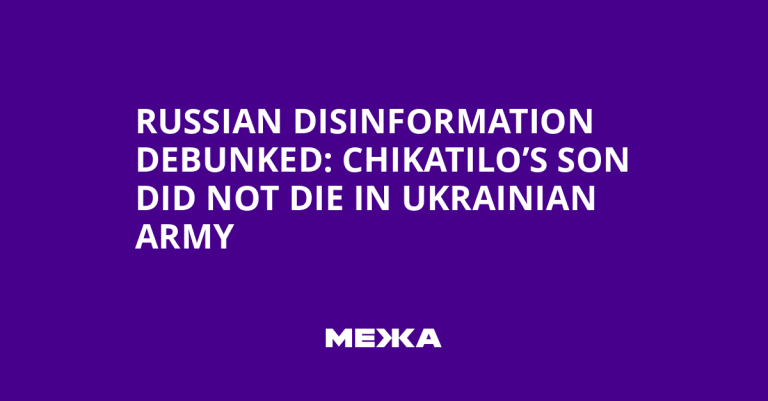The Ghost of Chikatilo: A Disinformation Campaign Targeting Ukraine’s Armed Forces
The digital battlefield of the ongoing conflict between Russia and Ukraine is rife with misinformation and propaganda, with both sides leveraging narratives to sway public opinion and demoralize the opposition. Recently, a particularly insidious piece of disinformation emerged, exploiting the infamous name of Soviet serial killer Andrei Chikatilo to cast a shadow over the Ukrainian defense forces. The claim, originating from Russian Telegram channels and quickly amplified by various news outlets and social media platforms, alleged the death of Chikatilo’s son while serving in the Ukrainian army. This fabrication, swiftly debunked by Ukrainian officials and independent fact-checkers, serves as a stark reminder of the insidious nature of modern information warfare and the importance of critical media literacy.
The initial spark of this disinformation campaign ignited on August 20th, 2024, with the Russian Telegram channel SHOT reporting the alleged death of Chikatilo’s son. This narrative quickly gained traction within the Russian media ecosystem, spreading like wildfire across news websites and social media platforms. The story even seeped into Ukrainian online spaces, where some Telegram channels, lacking journalistic rigor and failing to seek official confirmation, further disseminated the falsehood. The absence of verifiable sources and the reliance on sensationalism contributed to the rapid propagation of this fabricated narrative.
However, the façade of this carefully constructed lie began to crumble under scrutiny. Official inquiries to the Kharkiv Territorial Center for Recruitment and Social Support yielded a definitive rebuttal. Authorities confirmed that Chikatilo’s son had not joined the Ukrainian army and, furthermore, had violated military enrollment rules. Yuriy, the individual falsely identified as the deceased son, corroborated these statements, affirming that he had not served in the military due to chronic health conditions. While acknowledging his awareness of the circulating misinformation, Yuriy expressed indifference towards the false reports and declined further comment.
The motivation behind this disinformation campaign becomes apparent when viewed through the lens of information warfare. The Center for Countering Disinformation, analyzing the incident, highlighted the calculated strategy employed by Russian propagandists. By invoking the notorious Chikatilo name, the fabricated story sought to exploit ingrained public revulsion and create a negative association with the Ukrainian armed forces. This tactic aimed to seed doubt about the army’s effectiveness and bolster the narrative of substantial Ukrainian losses, thereby undermining public morale and eroding support for the war effort.
The implications of such disinformation campaigns extend beyond the immediate dissemination of false information. Even after debunking, the lingering residue of negative associations can persist in the public consciousness. The mere mention of Chikatilo’s name in connection with the Ukrainian army, regardless of its veracity, can leave a lasting impression, subtly influencing public perceptions and potentially fostering distrust towards the military and law enforcement agencies. This enduring impact underscores the insidious nature of disinformation and the challenges in effectively countering its effects.
Ukrainian officials and experts, recognizing the gravity of the situation, have emphasized the need for heightened media literacy and critical evaluation of information. While acknowledging the difficulty in controlling the rapid spread of misinformation across diverse online platforms, they stress the importance of responsible journalism and fact-checking. Ongoing efforts to educate media professionals and public figures about disinformation tactics are crucial in mitigating the impact of such campaigns. The incident serves as a stark reminder of the importance of relying on verified sources, especially during times of conflict, and resisting the temptation to share unconfirmed information, no matter how compelling it may seem. The battle against disinformation requires a collective effort, demanding vigilance, critical thinking, and a commitment to truth from individuals, media outlets, and official bodies alike.


